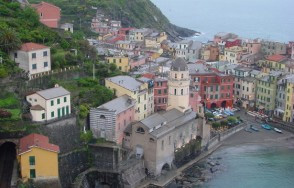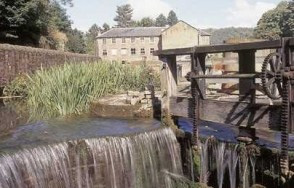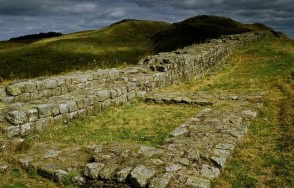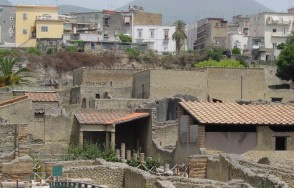World Heritage Convention
The World Heritage Convention was adopted by UNESCO in 1972, and ratified by the UK in 1984. It describes the kind of natural or cultural sites of ‘outstanding universal value’ (OUV) that can be considered for inscription on the World Heritage List.
UNESCO World Heritage Committee
The UNESCO World Heritage Committee meets once a year. It is responsible for implementing the World Heritage Convention. Its role is to:
- decide which sites from the Tentative List to inscribe onto the World Heritage List
- look at State of Conservation reports
- ask States Parties to take action if sites are not being properly managed
- decide which sites to put on the List of World Heritage in Danger
The records of the World Heritage Committee sessions can be accessed here.
The Advisory Bodies – ICOMOS, IUCN and ICCROM
There are three advisory bodies named in the World Heritage Convention, who advise the World Heritage Committee. These are ICOMOS (International Council on Monuments and Sites), IUCN (International Union for the Conservation of Nature) and ICCROM (International Centre for the Study of the Preservation and Restoration of Cultural Property). ICOMOS advises on cultural sites, IUCN on natural sites and ICCROM on education and training.
UK World Heritage Sites
There are currently 35 World Heritage Sites in the UK. Each site has a World Heritage Site Co-ordinating Committee (or Steering Group), which is made up of representatives from a range of local and national bodies, and meets regularly to review the management of the site and its development.
On a six-yearly cycle, each country, including the UK, has to submit a Periodic Report to the World Heritage Committee on how the World Heritage Convention is being applied. This includes reports on the state of conservation of all the World Heritage sites in its territory.
Cultural Sites
Blaenavon Industrial Landscape (2000)
- UNESCO information on Blaenavon
- Blaenavon World Heritage Site website
- Key documents about Blaenavon World Heritage Site
Blenheim Palace (1987)
Canterbury Cathedral, St Augustine’s Abbey, and St Martin’s Church (1988)
Castles and Town Walls of King Edward in Gwynedd (1986)
- UNESCO information on Castles and Town Walls of King Edward in Gwynedd
- CADW website on Castles and Town Walls of King Edward in Gwynedd
City of Bath (1987)
Cornwall and West Devon Mining Landscape (2006)
- UNESCO information on Cornwall and West Devon Mining Landscape
- Cornish Mining World Heritage Site website
- Management Plan 2020-2025
Derwent Valley Mills (2001)
Durham Castle and Cathedral (1986)
The Flow Country (2024)
Forth Bridge (2015)
Frontiers of the Roman Empire (1987)
- UNESCO information on Frontiers of the Roman Empire
- Historic Scotland website on the Antonine Wall
- English Heritage website on Hadrian’s Wall
Gorham’s Cave Complex, Gibraltar (2016)
Great Spa Towns of Europe (2021)
Heart of Neolithic Orkney (1999)
- UNESCO information on Heart of Neolithic Orkney
- Historic Scotland website on Neolithic Orkney
- Scottish Ten project scanning Neolithic Orkney World Heritage Site
Historic Town of St George and Related Fortifications, Bermuda (2000)
Ironbridge Gorge (1986)
Jodrell Bank Observatory (2019)
Lake District (2017)
Liverpool – Maritime Mercantile City (2004; delisted 2021)
- UNESCO information on Liverpool – Maritime Mercantile City
- Liverpool World Heritage Site website
- Liverpool placed on List of World Heritage in Danger
- World Heritage Committee deletes Liverpool – Maritime Mercantile City from UNESCO’s World Heritage List (2021)
Maritime Greenwich (1997)
Moravian Church Settlements (2015)
New Lanark (2001)
- UNESCO information on New Lanark
- New Lanark website
- New Lanark World Heritage Site Management Plan 2013-2018
- Scottish Ten project scanning New Lanark World Heritage Site
Old and New Towns of Edinburgh (1995)
Pontcysyllte Aqueduct and Canal (2009)
Royal Botanic Gardens, Kew (2003)
Saltaire (2001)
Slate Landscape of Northwest Wales (2021)
Stonehenge, Avebury and Associated Sites (1986)
- UNESCO information on Stonehenge, Avebury and Associated Sites
- English Heritage website on the Stonehenge and Avebury World Heritage Site
- National Trust website on Stonehenge Landscape
- ICOMOS-UK response to A303 tunnel proposals (March 2017)
- 2017 World Heritage/ICOMOS mission report
Studley Royal Park, including the Ruins of Fountains Abbey (1986)
- UNESCO information on Studley Royal Park including the Ruins of Fountains Abbey
- Fountains Abbey and Studley Royal website
Tower of London (1988)
Westminster Palace, Westminster Abbey and Saint Margaret’s Church (1987)
- UNESCO information on Westminster Palace, Westminster Abbey and Saint Margaret’s Church
- Westminster City Council information on the World Heritage Site
- Westminster Abbey website
- World Heritage Site management plan
Natural Sites
Dorset and East Devon Coast (2001)
Giant’s Causeway and Causeway Coast (1986)
Gough and Inaccessible Islands (1995)
- UNESCO information on Gough and Inaccessible Islands
- Gough and Inaccessible Islands World Heritage Site Management Plan
Henderson Island (1988)
Mixed Sites
St Kilda (1986)
- UNESCO information on St Kilda
- National Trust for Scotland website on St Kilda
- Scottish Ten project scanning St Kilda World Heritage Site
UK Tentative List
Individual national governments are each responsible for nominating sites in their country from a Tentative List of future nominations. In the UK, the Department for Culture, Media and Sport (DCMS), nominates UK sites, on behalf of the government, from the UK’s Tentative List.
The devolved administrations in Scotland, Wales and Northern Ireland are responsible for choosing sites to forward to the DCMS.
After a nomination, there is an 18-month period of evaluation by one of UNESCO’s expert advisers. ICOMOS (International Council on Monuments and Sites) is responsible for cultural sites, and IUCN (International Council for Conservation of Nature) for natural ones. The UNESCO World Heritage Committee meets each year to take a decision on nominated sites.
- Chatham Dockyard and its Defences
- Creswell Crags – see details of our 2013 Summer Meeting on Ice Age Art and Landscape at Creswell Crags, 6-7 June 2013 here
- Darwin’s Landscape Laboratory
- Island of St Helena
- Mousa, Old Scatness and Jarlshof: the Zenith of Iron Age Shetland
- The Twin Monastery of Wearmouth Jarrow
- Turks and Caicos Islands
Resource Manual on Preparing World Heritage Nominations
This UNESCO publication, prepared jointly with ICOMOS, IUCN and ICCROM, aims to help those preparing World Heritage site nominations.
ICOMOS-UK World Heritage Committee
The ICOMOS-UK World Heritage Committee is the focus of World Heritage activity within ICOMOS-UK. It considers issues arising in the UK on World Heritage Sites, tentative lists, nominations, management plans and monitoring reports. It also advises ICOMOS (international) and UNESCO on all matters relating to World Heritage in the UK.
Chair: Peter Marsden
Contact: admin@icomos-uk.org
Other World Heritage Links
- Policy for the implementation of the ICOMOS World Heritage mandate
- UNESCO Operational Guidelines for the Implementation of the World Heritage Convention
- UNESCO Frequently Asked Questions on World Heritage
- UNESCO World Heritage Centre
- ICOMOS Documentation Centre
- Department of Culture, Media and Sport (DCMS) pages on World Heritage
- CADW pages on World Heritage in Wales
- Historic Environment Scotland pages on World Heritage
- Historic England pages on World Heritage
- Local Authority World Heritage Forum (LAWHF)
- UK National Commission for UNESCO







